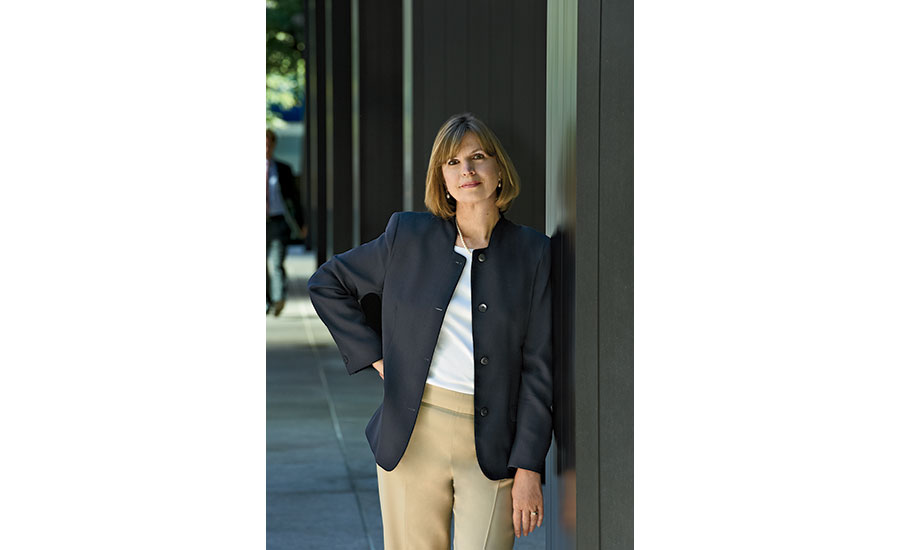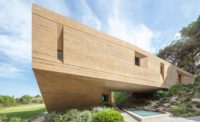The Transformative Power of Architecture and the Arts
Design and culture bring change to communities at every scale, around the world.

Photo © Michel Arnaud
In this issue of RECORD, we look at architecture in communities around the world that typically don't have access to good design. The work of talented architects—often operating pro bono or at reduced fees—can have a big impact on a small settlement. Such exemplary projects as a cholera clinic in Haiti and a vaccination center in Kenya, a school in Zambia, and, closer to home, a multiunit housing project for the formerly homeless in downtown Los Angeles prove the point.
We've also included two projects that call on the arts or culture to transform their remote communities. “Art is a form of nourishment,” said Susan Sontag, and that hunger for cultural sustenance is universal. In a Senegalese village, New York–based architect Toshiko Mori created an artists residence and community center, sponsored by an arts foundation in Connecticut, while Beijing-based He Wei Architect converted the old factory complex of a dying rural hamlet in China into a cultural center celebrating the local tradition of making oils and cereals—and now the village attracts 20,000 tourists a year.
The transformative power of art and culture on communities in the U.S. is well known. Artists looking for cheap studio space and living quarters start a migration into a neglected urban neighborhood; before long, a few bars and restaurants arrive, followed by boutiques, clubs, and hipsters. Soon real-estate investors arrive and, voilà! You have SoHo in New York; Deep Ellum in Dallas; the Warehouse District in New Orleans. Meanwhile, the struggling artists have long moved on.
Recently I wandered around the Arts District in downtown Los Angeles. This is not where the big cultural institutions are on Bunker Hill—Gehry's Disney Concert Hall and Isozaki's Museum of Contemporary Art, to be joined in September by the Broad Museum, designed by Diller Scofidio + Renfro.
The Arts District is actually a branded business-improvement district farther east, in a rundown neighborhood of old warehouses, industrial buildings, and parking lots near the Southern California Institute of Architecture (SCI-Arc). Artists and creative types have been living there—and in Chinatown and Little Tokyo nearby—for decades. But, though still scruffy in character, the neighborhood has been prettifying very quickly in the last few years, with new shops, cafés, and warehouses renovated for offices and loft living opening up. Numerous construction projects are under way. Along one edge of the neighborhood is the spanking new white-stucco condo and mixed-use development One Santa Fe, designed by Michael Maltzan, which snakes dramatically along for a quarter mile, almost parallel to SCI-Arc, which was originally a freight depot. The apartments are mostly market-rate (20 percent are set aside as affordable) and will bring even more upscale urbanites to the neighborhood.
And, yes, the arts are about to boom in the Arts District too. Near One Santa Fe is a former flour mill complex—now closed, forlorn, and shabby—that will become the home of Hauser Wirth & Schimmel, a huge branch of the Swiss gallery franchise. The seven buildings and courtyard of the complex will be adapted for 100,000 square feet of art and installation space—for commercial shows as well as what the gallery is calling “museum-caliber exhibitions”—plus a restaurant. The design consultant is New York–based Annabelle Selldorf, architect of many prestigious galleries in New York, London, and elsewhere. This kind of cultural enterprise, with an opening planned next year, clearly will be a neighborhood game-changer.
Some cities are trying to deal with the transformative power of culture and still maintain economic diversity (see our news report about New York's new cultural plan). And we salute good architects who have a hand in creating places for art, education, and health—especially when they do so at every scale, for people of all incomes. Undeniably, the arts bring life to communities—whether to once-gritty neighborhoods in wealthy Western cities or to the world's remotest villages.






